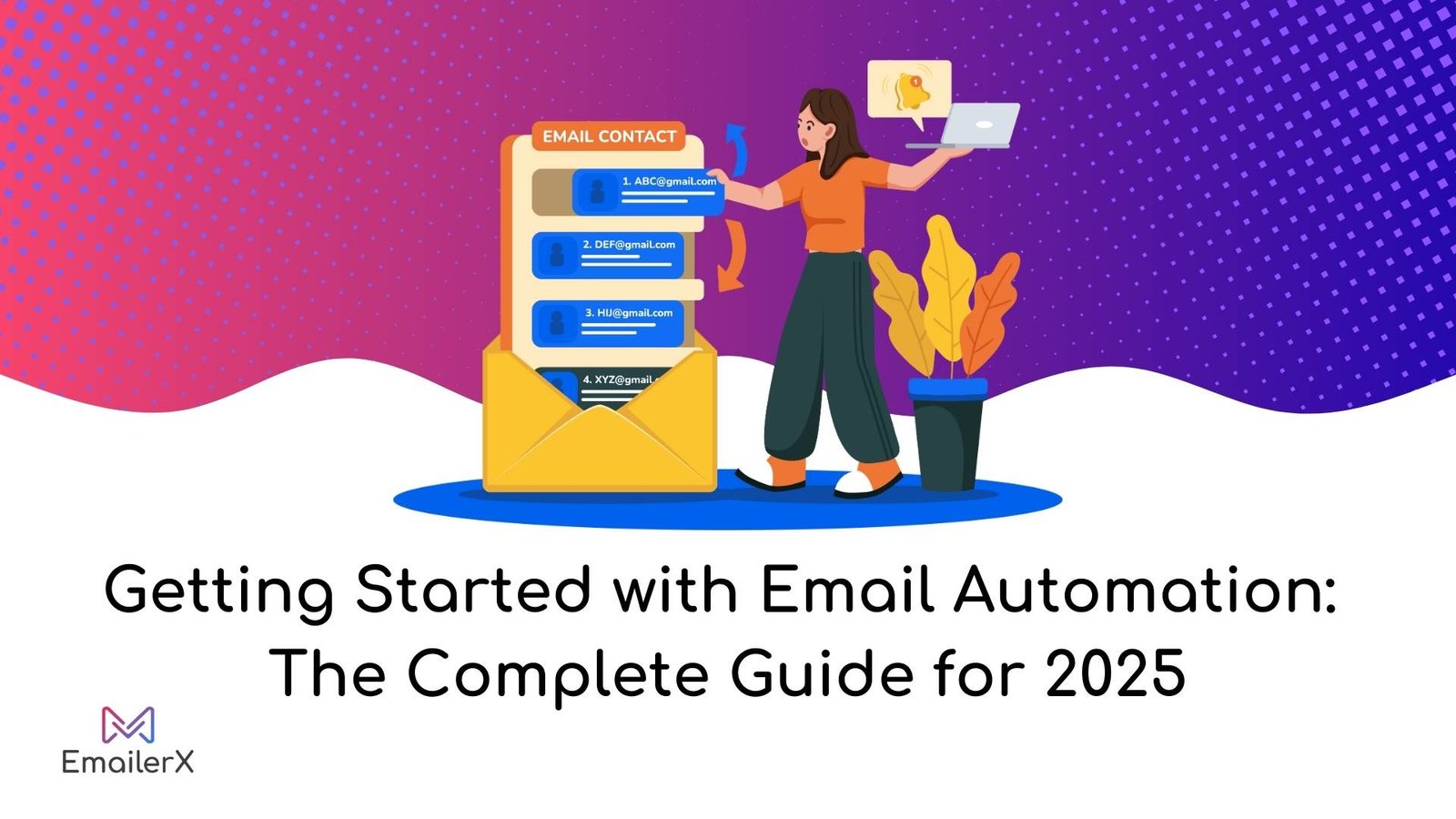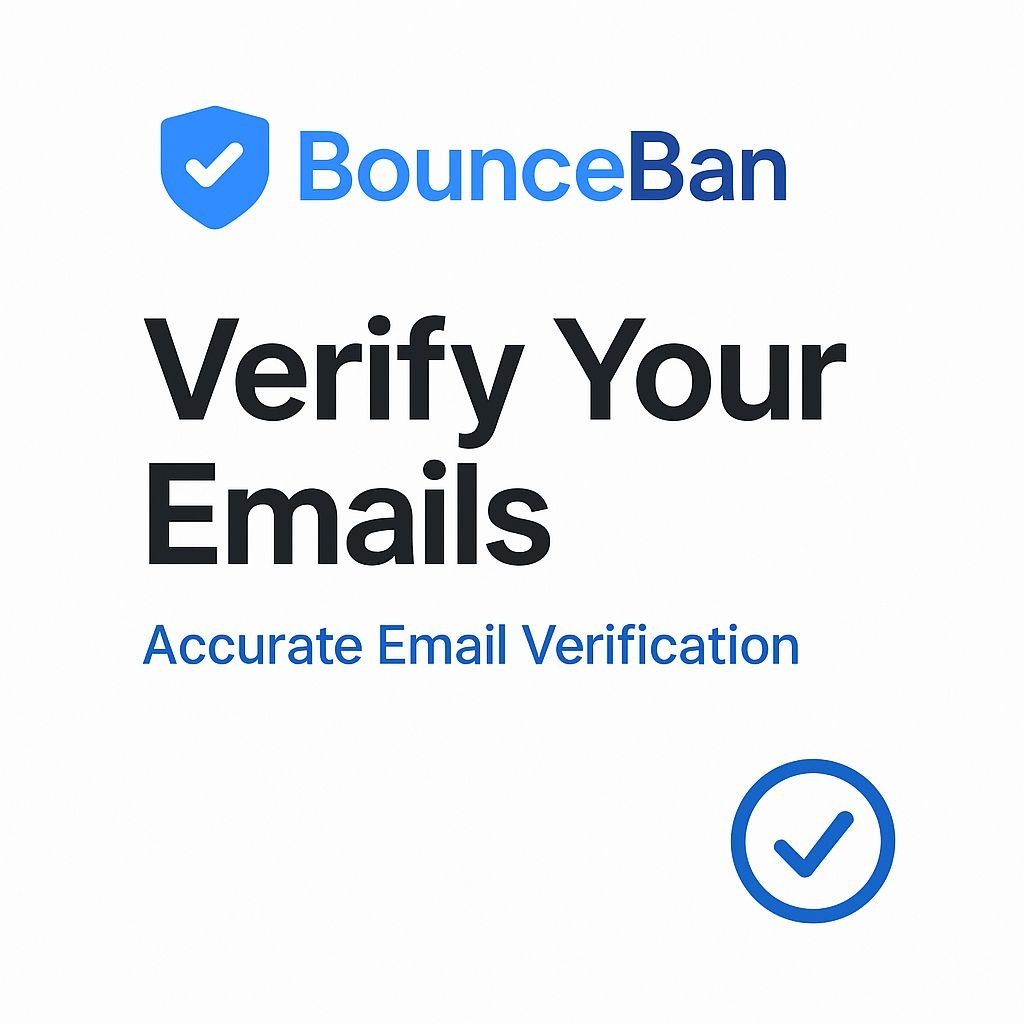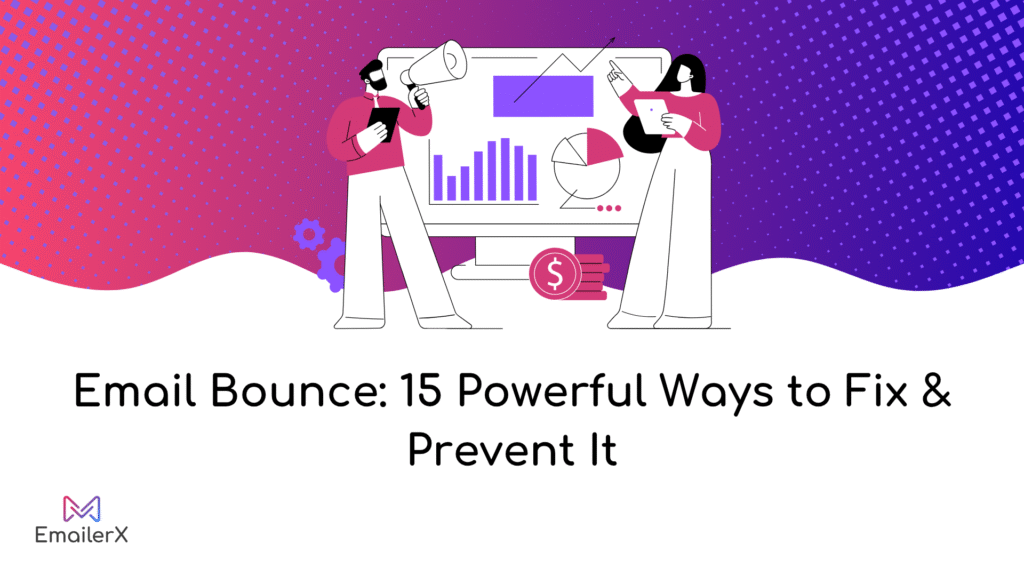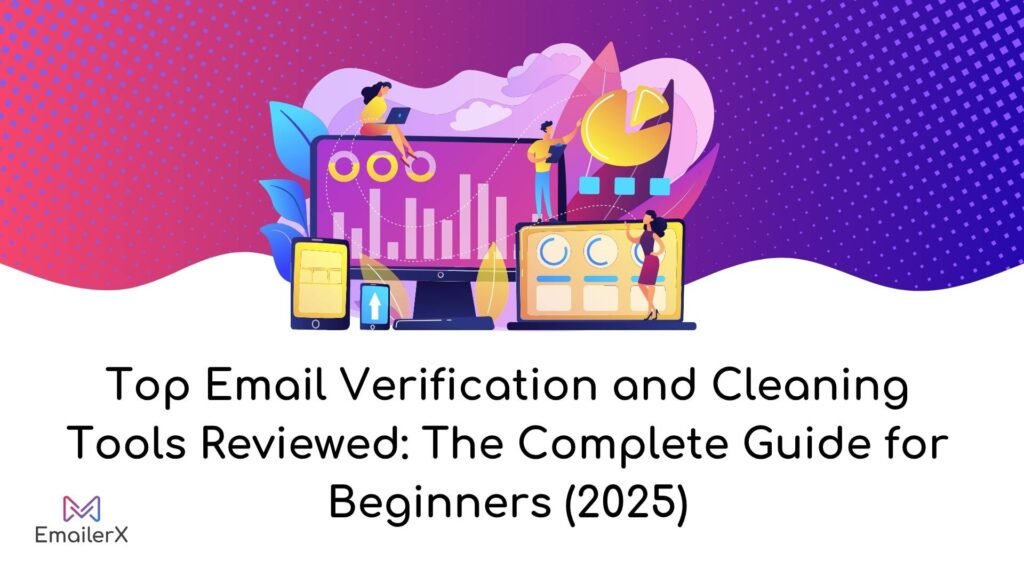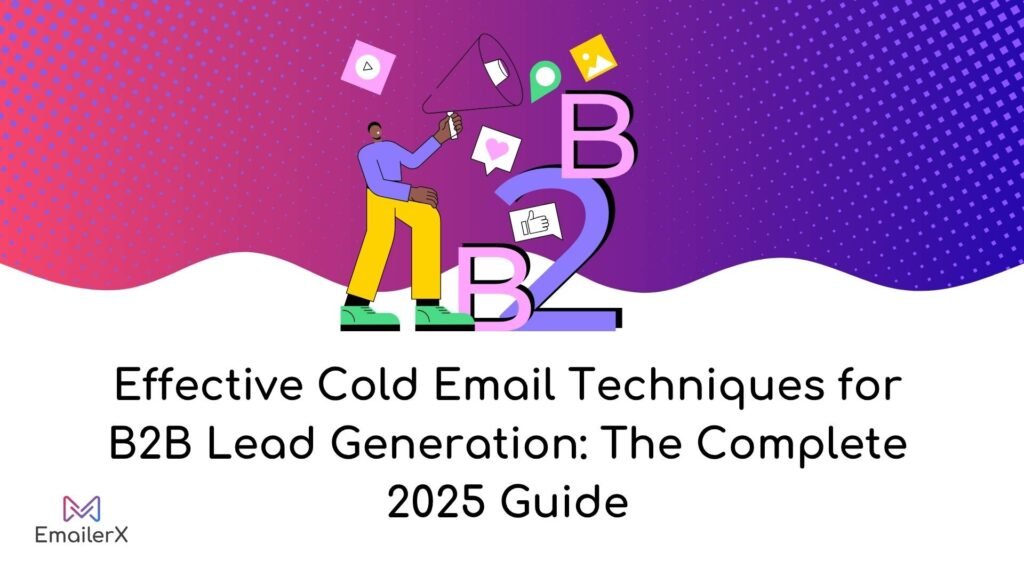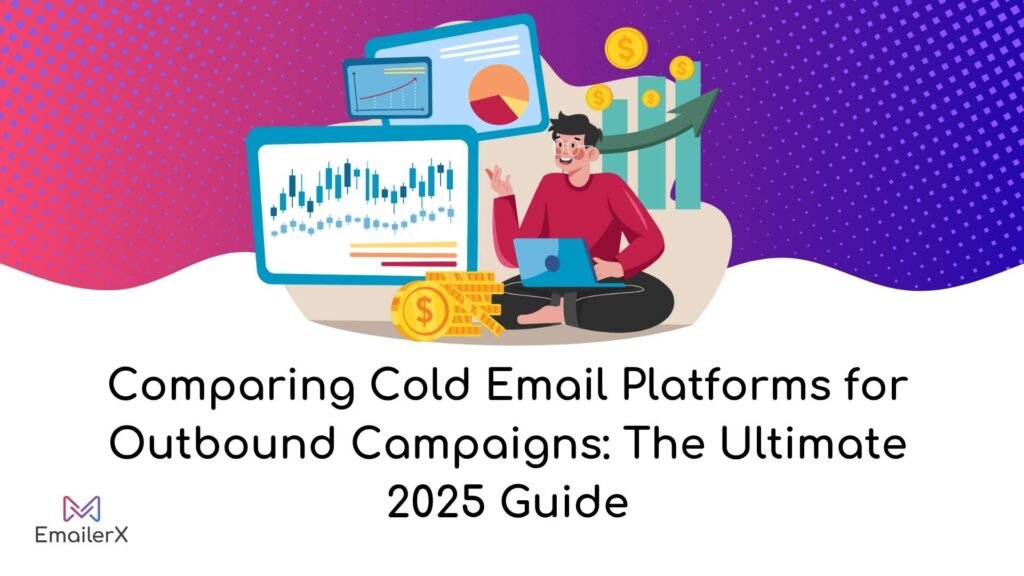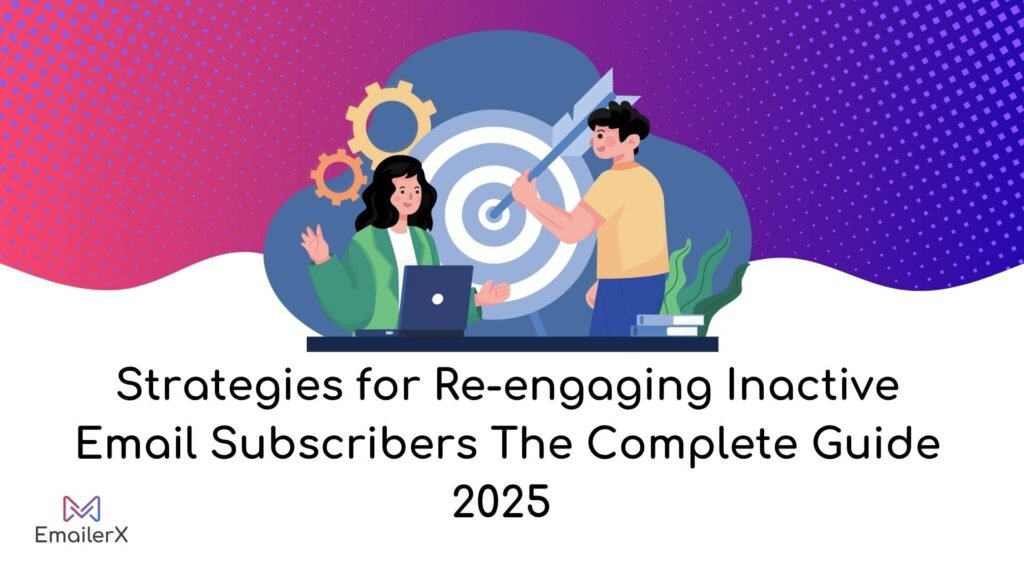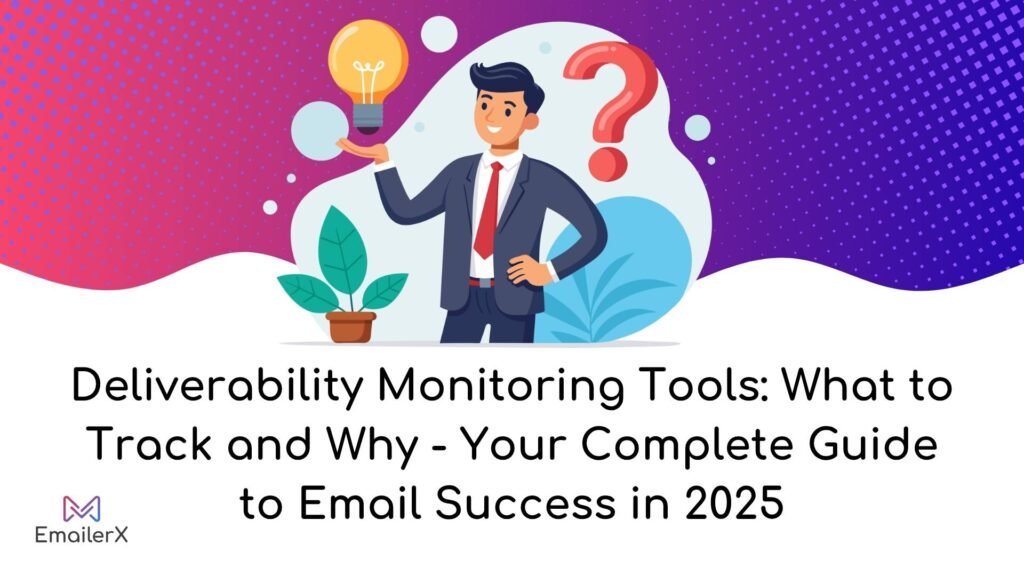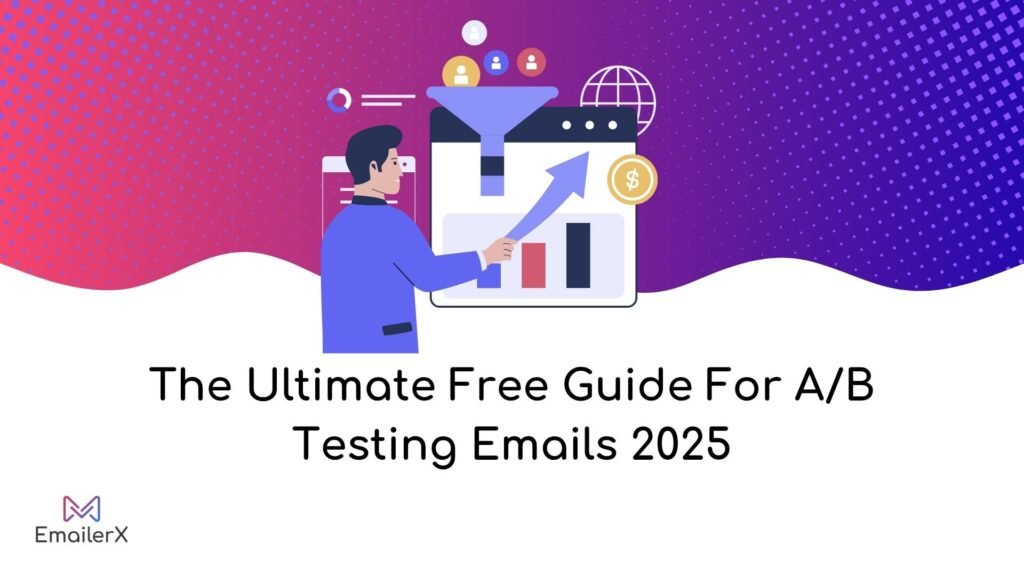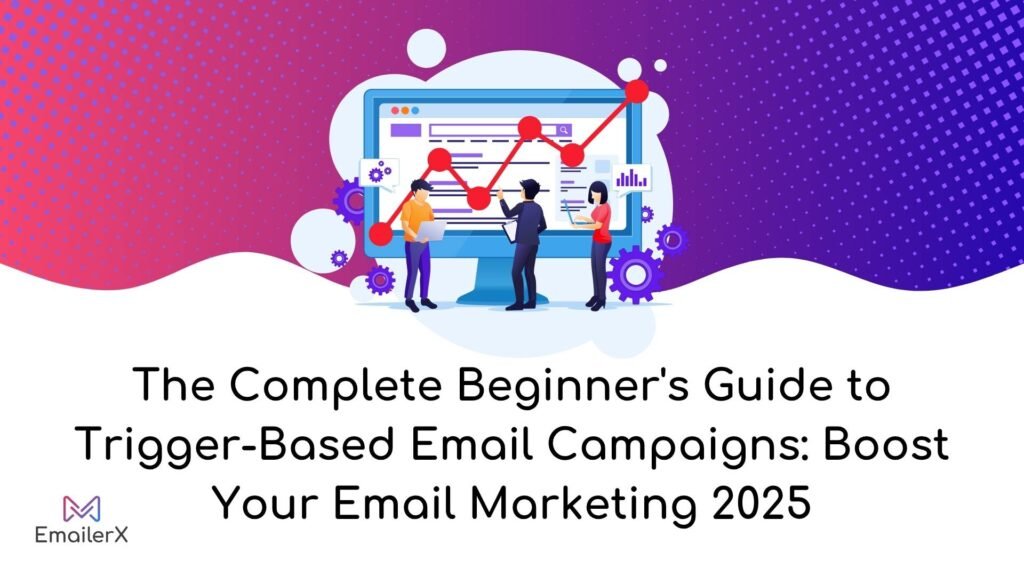Table of Contents
ToggleIntroduction
In today’s fast-paced digital marketing landscape, email automation has transformed from a luxury to a necessity.
This powerful strategy allows businesses of all sizes to deliver personalized, timely messages to their audience without manual intervention turning prospects into customers and customers into advocates.
Recent data reveals that automated email campaigns generate 320% more revenue than non-automated campaigns, reported by Campaign Monitor. while businesses using email automation report saving an average of 20 hours per week on marketing tasks.
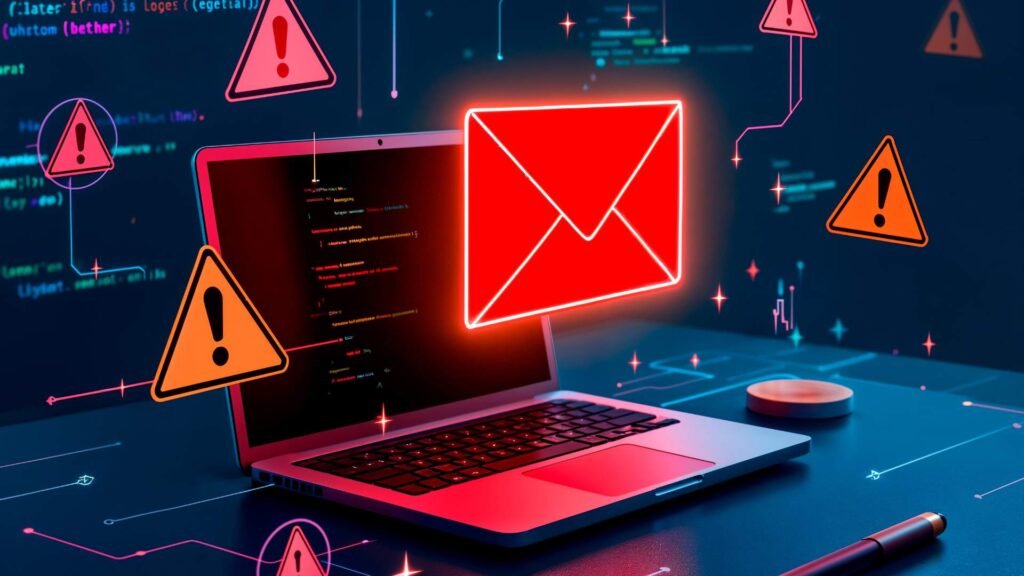
With open rates for automated emails averaging 70.5% higher than regular marketing messages, the value proposition is clear.
In this comprehensive guide, you’ll discover everything you need to know about email automation from selecting the right tools and building your first workflows to advanced strategies that drive measurable results.
Whether you’re a small business owner or a marketing professional, you’ll learn practical steps to implement email automation systems that grow with your business.
The Evolution of Email Marketing
Email marketing has undergone a remarkable transformation:
- Early days (1990s-2000s): Bulk, untargeted “spray and pray” email blasts
- Mid-evolution (2000s-2010s): Basic segmentation and scheduled newsletters
- Modern approach (2010s-Present): Behavior-triggered, personalized automated journeys
Today’s email automation integrates with your entire tech stack, using artificial intelligence to optimize everything from send times to content selection, creating truly personalized experiences at scale.
Types of Email Automation Workflows
Email automation encompasses various workflow types that serve different purposes across the customer journey:
- Trigger-based workflows: Activated by specific user actions (signing up, abandoning a cart, etc.)
- Time-based workflows: Delivered according to a predetermined schedule (welcome series, onboarding)
- Segment-based workflows: Targeted to specific audience segments (industry, behavior patterns)
- Lifecycle workflows: Mapped to different stages of the customer journey (awareness, consideration, purchase)
Each workflow type serves unique goals within your marketing strategy, working together to create seamless customer experiences that drive engagement and conversions.
Benefits of Email Automation for Businesses
Implementing email automation delivers transformative advantages that impact both operational efficiency and marketing effectiveness:
Time and Resource Efficiency
Email automation significantly reduces the manual effort required to maintain consistent communication with your audience. Instead of individually crafting and sending each message, you can:
- Create messages and sequences once, allowing them to run perpetually
- Automatically segment and target specific audience groups
- Focus your team’s creative energy on strategy and optimization rather than execution
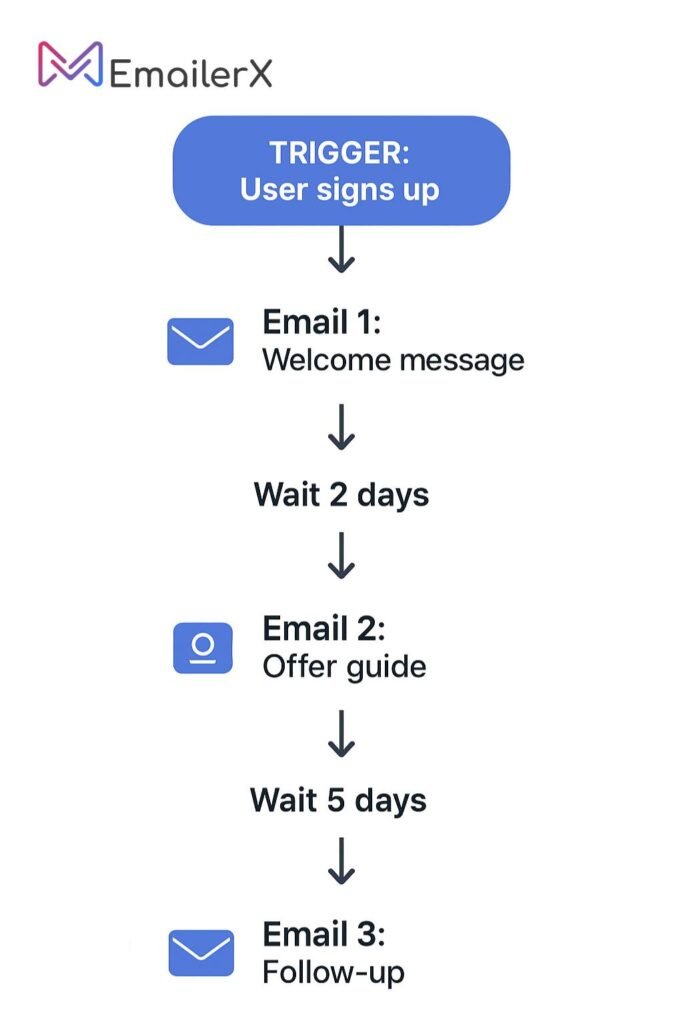
Many businesses report saving 10-15 hours weekly after implementing basic automation workflows, with those hours redirected to high-impact marketing activities.
Personalization at Scale
Modern consumers expect personalized experiences, but delivering them manually is impossible at scale. Email automation solves this paradox by enabling:
- Dynamic content insertion based on user data and behaviors
- Automatically triggered responses to individual actions
- Progressively personalized messaging as you gather more subscriber data
Research shows personalized automated emails drive 6X higher transaction rates while maintaining the authentic feel of one-to-one communication.
Improved Customer Journey Management
Email automation creates consistency across the entire customer lifecycle:
- New subscribers receive timely welcomes and onboarding
- Prospects get nurturing content matched to their interests and behaviors
- Customers receive post-purchase support and cross-selling opportunities
- Inactive users get thoughtful re-engagement messages
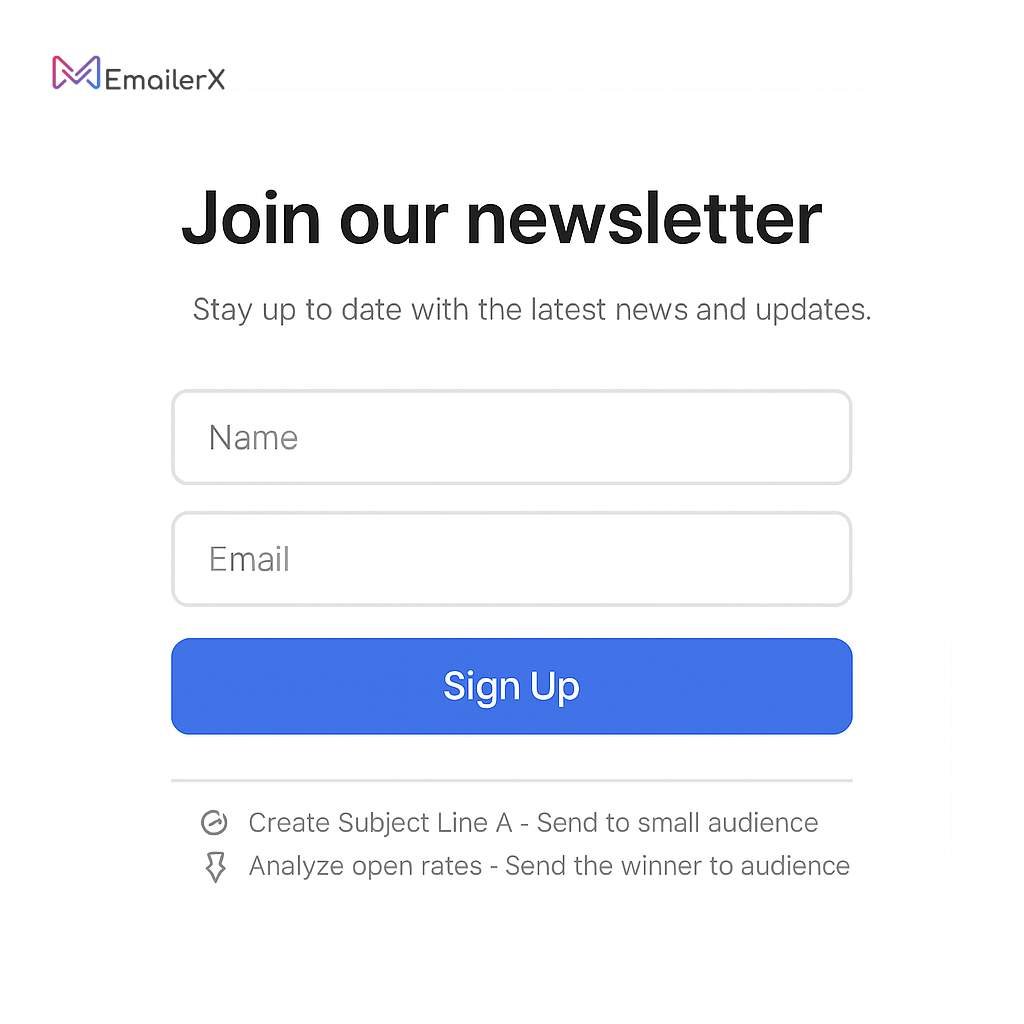
This comprehensive journey management builds stronger relationships by ensuring no customer falls through the cracks or misses important touchpoints.
Measurable ROI and Performance Tracking
Unlike many marketing channels, email automation provides exceptionally clear ROI visibility:
- Precise tracking of opens, clicks, conversions, and revenue
- Performance comparison across different automation workflows
- Ability to test and optimize sequences for continuous improvement
With attribution tracking, businesses can see exactly how much revenue each automated sequence generates with many reporting ROI figures between 3,800% and 4,200% for well-optimized workflows.
Common Myths About Email Automation Debunked
Despite its proven effectiveness, several persistent myths keep businesses from fully embracing email automation:
“Email automation feels impersonal”
Reality: Today’s automation tools enable higher personalization than manual campaigns. By leveraging behavioral data, purchase history, and engagement patterns, automated emails can deliver hyper-relevant content that feels more personal than generic newsletters.
Modern automation platforms allow for:
- Dynamic content blocks that change based on subscriber data
- Personalization beyond simple name insertion
- Behavior-triggered messages that respond to individual actions
Setting up automation is too technical”
Reality: While sophisticated automation was once the domain of technical specialists, today’s platforms feature intuitive drag-and-drop interfaces and pre-built templates that make implementation accessible to marketers with any technical background.
Most platforms now offer:
- Visual workflow builders
- Templates for common automation sequences
- Step-by-step setup wizards
“Automation is only for large businesses”
Reality: Small businesses often benefit most from automation, as it allows them to:
- Maintain consistent communication despite limited staff
- Compete with larger companies by delivering comparable customer experiences
- Scale marketing efforts without proportionally increasing headcount
In fact, small businesses with lean teams frequently see the highest ROI from email automation by reclaiming precious time for strategic initiatives.
Why Use Email Automation? – Benefits of Automating Emails
If you’re investing time in email marketing, automating emails can multiply the impact of your efforts. Here are some major benefits of email automation that highlight why it’s worth doing:
1. Saves Time and Effort: Automation handles repetitive email tasks for you. Instead of manually sending welcome messages to every new subscriber or following up with each customer, you create the email or sequence once and the system does the rest.
2. Consistent, Timely Outreach: Humans forget or get busy, but automated systems don’t. Email automation ensures your audience never misses an important touchpoint.
3. Personalized Messaging at Scale: Despite being automated, these emails can feel very personal. Modern email tools let you insert the recipient’s name and other details into the content, and even dynamically change sections of an email based on a person’s behavior or traits.
4. Higher Open and Click Rates: Automated emails often outperform regular newsletters in engagement. Because they’re targeted and sent at the moment a user is most interested, people are more likely to open and click them.
5. Improved Conversion and Sales: Ultimately, email automation can lead to more conversions and revenue. By guiding subscribers through a well-planned series (for example, educating them and then pitching an offer), you nurture leads into customers automatically.
6. Scalable Growth: As your business or subscriber list grows, manually keeping up with emails becomes impossible. Automation scales your email marketing effortlessly. Whether you have 100 contacts or 100,000, an automated workflow will send each person messages tailored to their actions.
7. Better Audience Retention: Automated campaigns help maintain long-term engagement. You can set up nurture sequences that keep educating and providing value to subscribers over weeks or months, keeping your brand on their radar.
8. Measurable and Optimizable: Every automated email can be tracked. You’ll see open rates, clicks, and other metrics for each email in a workflow.
Check out How to Improve Your Email Open Rates and Click Rates in 2025
Did you know? Automated emails have an open rate 70.5% higher than standard marketing emails market.us. They reach people when interest is highest, which is why trigger-based messages (like welcome or order confirmation emails) are so powerful.
Essential Email Automation Tools
Selecting the right email automation platform forms the foundation of your success with this marketing strategy. The ideal solution aligns with your business size, goals, technical capabilities, and budget.
Criteria for Selecting the Right Email Automation Platform
When evaluating potential email automation tools, consider these essential factors:
- Ease of use: Intuitive interface that your team can navigate without extensive training
- Scalability: Ability to grow with your business and subscriber list
- Integration capabilities: Seamless connection with your CRM, e-commerce platform, and other marketing tools
- Segmentation capabilities: Flexible options for targeting specific subscriber groups
- Analytics and reporting: Comprehensive metrics to measure performance
- Deliverability features: Tools to ensure your emails reach the inbox
- Customer support: Available assistance when you encounter challenges
- Compliance tools: Features to help maintain regulatory compliance
Comparison of Top Email Automation Tools
| Platform | Best For | Key Strengths | Pricing Model |
| Mailchimp | Small businesses getting started | User-friendly interface, all-in-one marketing platform | Tiered by contacts |
| ActiveCampaign | Mid-size with complex needs | Advanced automation capabilities, CRM integration | Feature-based tiers |
| HubSpot | Growth-focused businesses | Comprehensive marketing suite, powerful workflows | Tiered with add-ons |
| Klaviyo | E-commerce businesses | Deep e-commerce integrations, revenue attribution | Based on contacts |
| SendinBlue | Budget-conscious businesses | Strong deliverability, affordable pricing | Send-based pricing |
| ConvertKit | Content creators and solopreneurs | Creator-focused features, simple automation | Subscriber-based |
Each platform offers unique advantages, so evaluate them based on your specific needs rather than general popularity.
Budget-Friendly Email Automation Solutions
Cost-effective email automation options make this powerful marketing strategy accessible to businesses with limited resources.
Free and Freemium Options
Several platforms offer robust free plans with automation capabilities:
- Mailchimp: Free plan includes basic automation for up to 2,000 contacts
- SendinBlue: Free tier allows unlimited contacts with daily sending limits
- MailerLite: Free for up to 1,000 subscribers with automation features
- Omnisend: Free plan includes 500 emails per month with automation
These free options provide an excellent starting point for testing automation concepts without financial commitment.
Best Value Platforms for Small Businesses
For businesses ready to invest modestly in email automation:
- Moosend: Affordable pricing with comprehensive automation features starting around $9/month
- GetResponse: Entry-level plan with automation starts at approximately $15/month
- Drip: E-commerce-focused platform with powerful automation starting around $19/month
These platforms deliver enterprise-level automation capabilities at price points accessible to growing businesses often delivering ROI within the first month of implementation.
Technical Setup Requirements
Proper technical configuration ensures your automated emails reach subscribers’ inboxes and integrate seamlessly with your existing systems.
Domain Authentication (SPF, DKIM, DMARC)
Email authentication protocols protect your sender reputation and improve deliverability:
- SPF (Sender Policy Framework): Verifies that messages claiming to come from your domain are sent from authorized servers
- DKIM (DomainKeys Identified Mail): Adds a digital signature confirming emails weren’t altered in transit
- DMARC (Domain-based Message Authentication, Reporting & Conformance): Tells receiving servers how to handle messages that fail authentication
Most email service providers offer step-by-step guides for setting up these authentication methods, typically requiring simple DNS record updates.
Integration with Your Website and CRM
Connecting your email automation platform with other business systems creates seamless data flow:
- Website integration: Embed sign-up forms and tracking codes to capture leads and behavior data
- CRM integration: Synchronize contact records and activity history between systems
- E-commerce platform connection: Pull purchase data and product information into your emails
These integrations enable the creation of unified customer profiles that power truly personalized automation.
Compliance Tools for GDPR, CCPA, and Other Regulations
Email marketers must navigate an increasingly complex regulatory landscape:
- Explicit consent mechanisms: Forms with clear opt-in options
- Preference centers: Self-service subscription management for recipients
- Data rights management: Tools to handle access and deletion requests
- Geographic segmentation: Features to apply different rules based on subscriber location
Leading platforms now build compliance features directly into their systems, simplifying adherence to regulations like GDPR (Europe), CCPA (California), and CASL (Canada).
Building Your Email List for Automation
Even the most sophisticated automation strategy requires a quality subscriber list to succeed. Building this foundation ethically ensures your automations reach engaged, interested prospects.
Ethical List-Building Strategies
Focus on permission-based list growth methods that attract genuinely interested subscribers:
- Value-first approach: Offer something useful before requesting email addresses
- Clear expectations: Communicate what subscribers will receive and how often
- Double opt-in: Confirm subscriptions via a verification email
- Progressive profiling: Gather information gradually rather than all at once
These ethical approaches may grow your list more slowly than aggressive tactics, but they deliver substantially higher engagement, conversion rates, and long-term ROI.
Creating Effective Opt-in Forms and Landing Pages
Your signup touchpoints directly impact list growth rate and quality:
- Strategic placement: Position forms where they’re contextually relevant without disrupting the user experience
- Compelling copy: Clearly communicate the value proposition for subscribing
- Minimalist design: Request only essential information to reduce friction
- Mobile optimization: Ensure forms function perfectly on all devices
- A/B testing: Continuously test form elements to improve conversion rates
High-performing opt-in forms typically convert 3-5% of visitors, with specialized landing pages often achieving 10%+ conversion rates when carefully optimized.
Read to know more about How to Build Your First Email List ( From Scratch)
How to Automate Your Emails: Step-by-Step Guide
Getting started with email marketing automation might sound technical, but it’s quite approachable. You don’t need to be a programmer or have any special tech skills – most modern email platforms make it user-friendly with visual editors and templates. Below, we’ll go through the key steps to set up your first email automation. Follow these steps to go from zero to a running automated campaign.
Step 1: Choose the Right Email Marketing Automation Tool
Step 2: Build and Segment Your Email List
Step 3: Plan Your Email Automation Strategy and Workflows
Step 4: Create and Design Your Emails (Content & Templates)
Step 5: Set Up Triggers and Activate Your Workflows
Step 6: Test, Monitor, and Optimize Your Automations
Step 7: Ensure Compliance and Respect Your Subscribers
Lead Magnets That Convert
Offering valuable incentives dramatically improves email capture rates while setting positive expectations for your automation content.
Types of Lead Magnets by Industry
Different industries benefit from specialized lead magnet formats:
E-commerce:
- Product guides and comparison tools
- Style quizzes with personalized recommendations
- Exclusive discount codes
B2B Services:
- Industry reports and white papers
- Templates and calculators
- Free consultations or audits
Education:
- Mini-courses and sample lessons
- Checklists and study guides
- Assessment tools
Health and Wellness:
- Meal plans and recipe collections
- Workout programs
- Self-assessment quizzes
Designing High-Converting Downloadables
Effective lead magnets share common qualities regardless of format:
- Specific solutions: Address one clear problem rather than general information
- Immediate applicability: Provide value that can be implemented right away
- Unique perspective: Offer insights not readily available elsewhere
- Professional presentation: Maintain brand standards with polished design
- Delivery on promise: Fully deliver the value promised during opt-in
The most successful lead magnets demonstrate your expertise while solving a specific problem establishing trust that carries through your entire email automation sequence.
List Segmentation Strategies
Segmentation forms the foundation of relevant, high-performing email automations by ensuring the right messages reach the right subscribers.
Demographic Segmentation
Basic demographic divisions provide fundamental targeting options:
- Age groups: Generational preferences and references
- Geographic location: Regional offers and localized content
- Industry/profession: Tailored messaging for different professional contexts
- Company size/type: Appropriate solutions for different organizational scales
While these segments offer useful starting points, they typically perform best when combined with behavioral data.
Behavioral Segmentation
Subscriber actions provide powerful indicators of interest and intent:
- Website behavior: Pages visited, time spent, specific actions taken
- Email engagement: Open patterns, click history, content preferences
- Content consumption: Blogs read, videos watched, downloads accessed
- Product interactions: Items viewed, wishlist additions, comparison activities
Behavior-based segments often outperform demographic segments by 5-10X in engagement and conversion metrics.
Purchase History Segmentation
Past buying behavior strongly predicts future interests:
- Product categories: Interest in specific types of offerings
- Purchase frequency: Buying patterns and intervals
- Average order value: Spending comfort levels
- Last purchase date: Recency of engagement
These segments enable highly targeted cross-selling, upselling, and replenishment automations with exceptional conversion rates.
Engagement-Based Segmentation
Subscriber engagement levels require different communication approaches:
- Highly engaged: Frequent openers and clickers ready for deeper relationship
- Moderately engaged: Occasional interaction requiring nurturing
- At-risk: Declining engagement needing re-engagement efforts
- Inactive: No recent activity requiring win-back or list cleaning
Engagement segmentation ensures appropriate messaging frequency and content for each subscriber’s current relationship stage with your brand.
Conclusion
Email automation represents one of the most powerful and cost-effective marketing strategies available to modern businesses.
By following the guidance in this article selecting appropriate tools, building ethical lists, creating thoughtful segments, and implementing strategic workflows you can transform your email marketing from a manual burden into an automated system that delivers personalized experiences and measurable results.
The most successful email automation practitioners approach implementation gradually, starting with essential workflows before expanding to more complex sequences. This measured approach allows for testing, refinement, and organizational adaptation.
Begin your email automation journey today by evaluating your current processes, selecting a platform that meets your needs, and implementing your first automation workflow. The sooner you start, the sooner you’ll experience the remarkable efficiency and effectiveness this strategy provides.
Frequently Asked Questions (FAQs)
How much time does it take to set up email automation?
Basic workflows can be implemented in 1-2 days, while comprehensive systems typically require 2-4 weeks for complete setup, testing, and optimization.
How do I automate emails for free?
You can start automating emails for free by using an email marketing service that offers a free plan. Mailchimp, for instance, has a free tier that includes basic automation features (like single-step welcome emails or simple drip campaigns) up to a certain number of subscribers.
Klaviyo also offers a free plan for small lists (though you might need a paid plan for advanced flows as your list grows). Other platforms like MailerLite or Sendinblue (Brevo) have free plans with automation capabilities too.
To do it:
1. Sign up for a free account with one of these services.
2. Import or collect a few contacts (even if it’s just your own test emails to start)
3. Use a pre-built automation template (many have “Welcome Email” templates ready to go).
4. Customize the email content and activate the automation.
With a free plan, you can experiment with automating emails at no cost. Just be mindful of the contact or send limits of the free tier.
As your list and needs grow, you might eventually move to a paid plan for more features, but free is a great way to learn the ropes of email automation.
How do I get started with email marketing automation?
To get started, follow these basic steps:
1. Choose an Email Automation Platform: Sign up for a service like Mailchimp, Klaviyo, Instantly, etc. Pick one that fits your needs and budget.
2. Build Your Email List: If you haven’t already, add signup forms to your site or landing pages to collect subscribers (with their permission). Import any existing contacts you have (ensuring they’ve opted in).
3. Decide What to Automate First: Identify one or two key email sequences that would benefit you. A common starting point is a welcome email for new subscribers, since that’s your first impression. If you have customers, maybe also set up a post-purchase thank you email or a simple abandoned cart email if you run an online store.
4. Create the Email Content: Write the emails you want to send in those scenarios. Keep them friendly and helpful. For a welcome email, introduce your brand and perhaps offer a discount or useful resource. For an abandoned cart, remind the person what they left and invite them back.
5. Set Up the Automation Rules: In your email tool, use the automation/journey builder to configure the trigger (e.g., “signup event”) and the action (send your welcome email). If it’s a series, add delays (like “wait 2 days then send Email 2”). Most platforms have step-by-step wizards or templates to guide you.
6. Test It: Add yourself to the list or trigger the event to make sure you receive the automated email. Verify everything looks correct.
7. Activate: Turn on the automation. From now on, anyone who triggers it (e.g., new subscriber) will automatically get the emails you set up.
8. Monitor & Tweak: Watch your email reports over the next days/weeks. See if people are opening and clicking. Adjust subject lines or content if needed to improve performance.
That’s it! You’ll have started email marketing automation on a small scale. You can then expand to more complex sequences as you become comfortable.
Can I use email automation with a small subscriber list?
Absolutely! Even with lists of a few hundred subscribers, automation improves efficiency and effectiveness while establishing scalable systems for future growth
How often should I review and update my automations?
Conduct monthly performance reviews with quarterly deep-dive optimizations and annual comprehensive audits of your entire automation ecosystem.

